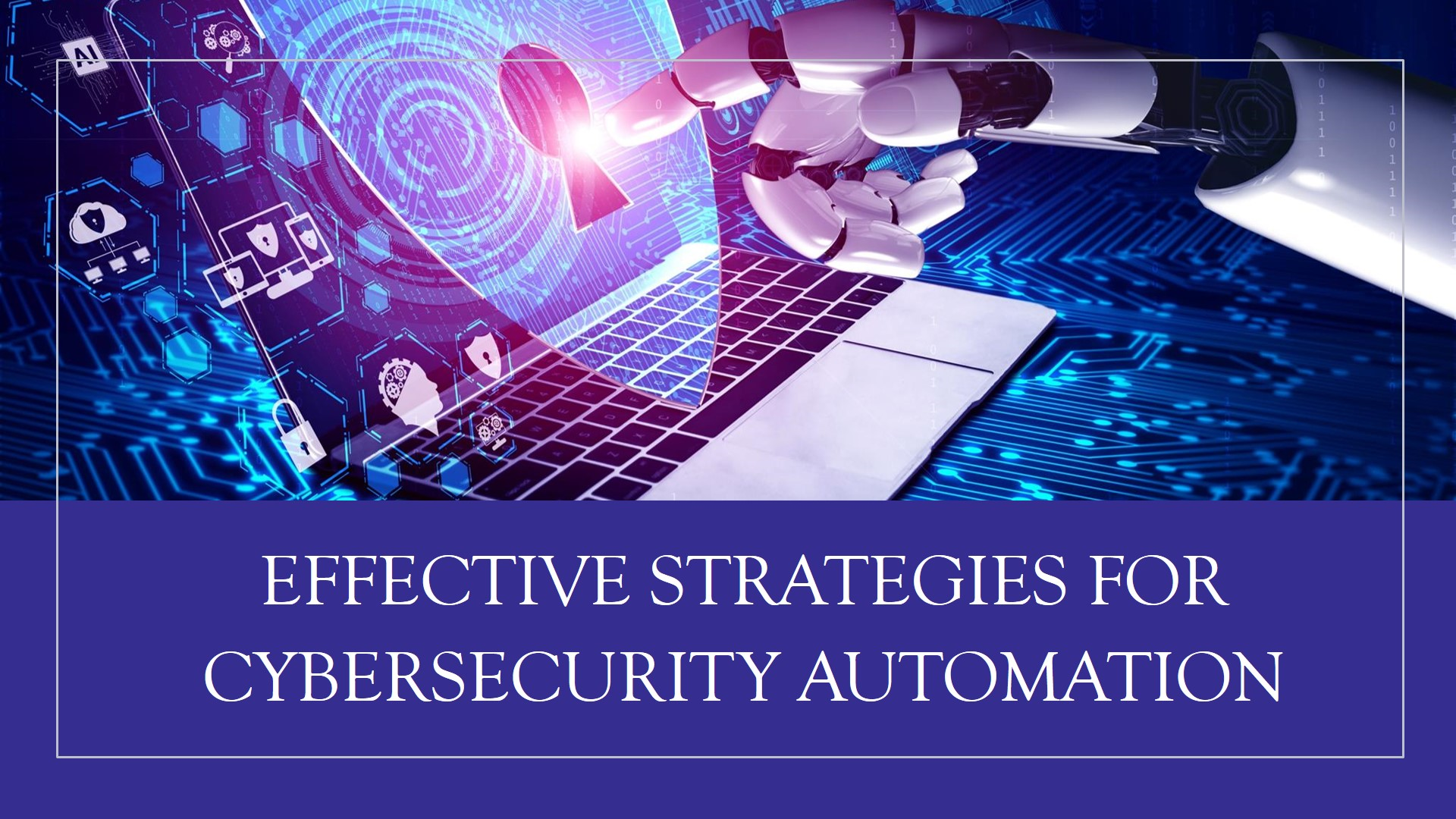Cybersecurity Automation: Strategies for Effective Implementation
Published: Dec 12, 10:09 AM

As cyber threats become more sophisticated and prevalent, organizations are increasingly turning to cybersecurity automation to enhance their defense mechanisms. Automation allows security teams to manage threats more effectively, streamline operations, and respond to incidents swiftly. However, implementing cybersecurity automation is not merely a matter of deploying technology; it requires a strategic approach to ensure its effectiveness. This article explores best practices for implementing cybersecurity automation in organizations.
Understanding Cybersecurity Automation
Cybersecurity automation involves the use of technology to perform security tasks and processes without human intervention. This includes automating threat detection, incident response, compliance monitoring, and vulnerability management. The goal is to reduce the workload on security teams, enhance accuracy, and improve response times to threats.
Benefits of Cybersecurity Automation
- Enhanced Incident Response
Automated incident response systems can quickly react to threats, significantly reducing the time it takes to contain and remediate incidents. This speed is critical in minimizing the potential damage caused by cyberattacks. - Comprehensive Threat Detection
Automation tools can analyze large volumes of data across networks and endpoints, providing a holistic view of security. They can identify anomalies and potential threats that may be missed by manual processes. - Improved Efficiency and Resource Allocation
By automating repetitive tasks, security teams can focus on strategic initiatives, threat analysis, and other high-value activities, improving overall operational efficiency. - Scalability
As organizations grow, so do their security needs. Automated systems can scale up or down based on the organization's size and complexity, ensuring that security measures remain robust regardless of changes.
Best Practices for Implementing Cybersecurity Automation
- Assess Current Security Posture
Before implementing automation, organizations should conduct a thorough assessment of their existing security processes and tools. This evaluation helps identify areas where automation can be most beneficial and highlights gaps that need to be addressed. - Define Clear Objectives
Establish specific goals for what the organization aims to achieve through automation. These objectives should align with the overall cybersecurity strategy and focus on areas like incident response times, threat detection rates, or compliance adherence. - Choose the Right Tools
The market is flooded with cybersecurity automation tools, ranging from Security Information and Event Management (SIEM) systems to automated incident response platforms. Organizations should carefully evaluate and select tools that best meet their needs and integrate seamlessly with existing infrastructure. - Prioritize Integration
Successful automation depends on the ability of various tools to work together. Ensure that automation solutions can integrate with existing security systems, allowing for smooth data flow and effective communication across platforms. - Develop Standard Operating Procedures (SOPs)
Establish clear SOPs for automated processes. This documentation should outline how automated systems will operate, including what actions to take during specific incidents and how to escalate issues when necessary. - Regularly Review and Update Automation Processes
Cyber threats evolve continuously, making it essential to review and update automated processes regularly. Organizations should adapt their automation strategies based on new threats, technological advancements, and changes in their operational environment. - Maintain Human Oversight
While automation enhances efficiency, human expertise is irreplaceable. Security teams should remain involved in the decision-making process, providing context and insight that automated systems may lack. - Train Security Staff
Invest in training for security personnel to ensure they are well-versed in the automated systems being implemented. This training should cover not only the technical aspects but also the strategic implications of automation on overall security.
Conclusion
Cybersecurity automation offers a powerful means to enhance an organization’s security posture, improve efficiency, and respond to threats more effectively. However, the successful implementation of automation requires careful planning, integration, and ongoing management. By following best practices and maintaining a balance between automation and human expertise, organizations can leverage cybersecurity automation to build a robust defense against ever-evolving cyber threats.
In a digital landscape where the stakes are high, investing in cybersecurity automation is not just a technological upgrade—it is a strategic imperative that can safeguard an organization’s assets and reputation in an increasingly complex threat environment.
Top Blogs
Published: Nov 26, 2024

Smart Inventory Solutions: Boosting Supply Chain Efficiency Through Automation
Published: Oct 14, 2024

Human Resource Management Automation: Streamlining HR Functions for Greater Efficiency
Published: Oct 30, 2024

Robotic Process Automation (RPA): Transforming Business Efficiency and the Future of Work
View All